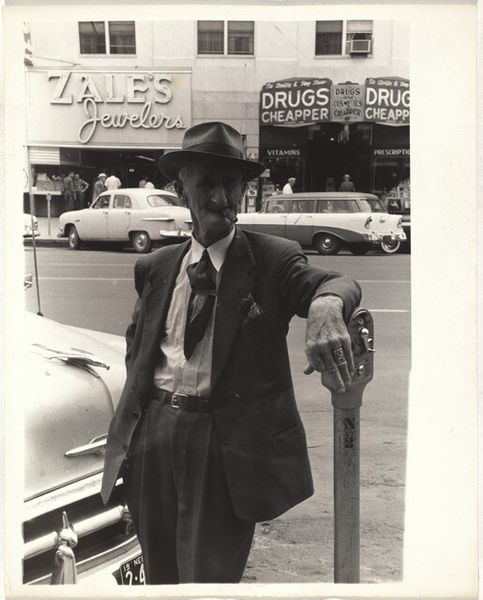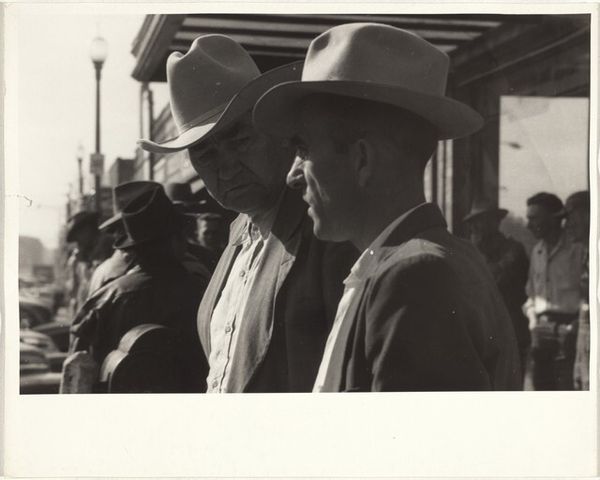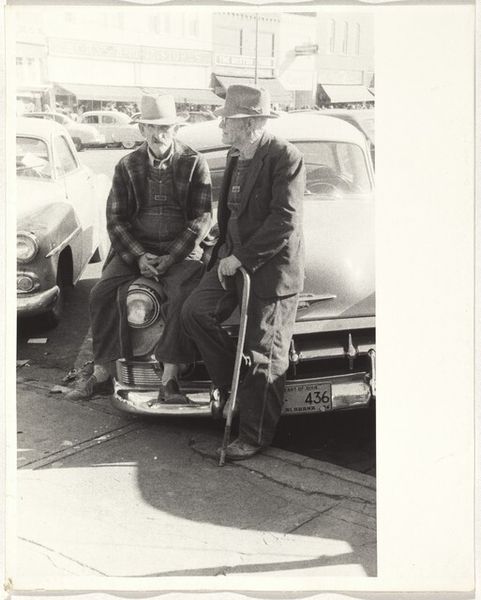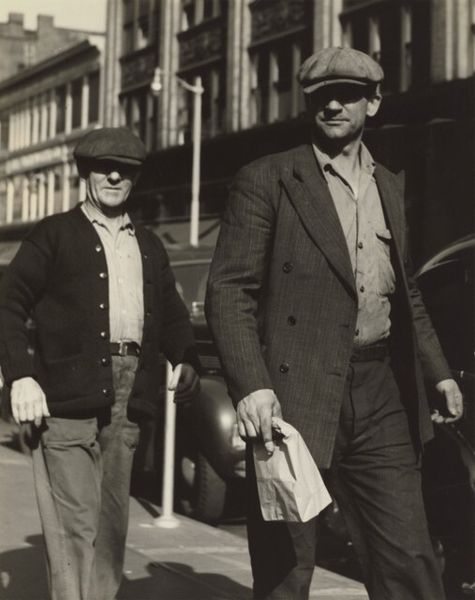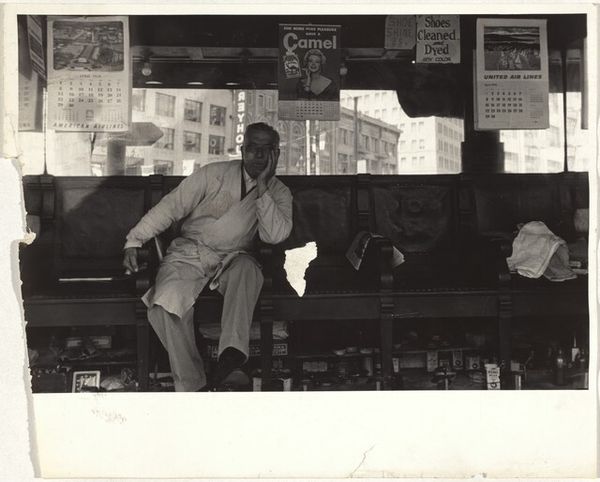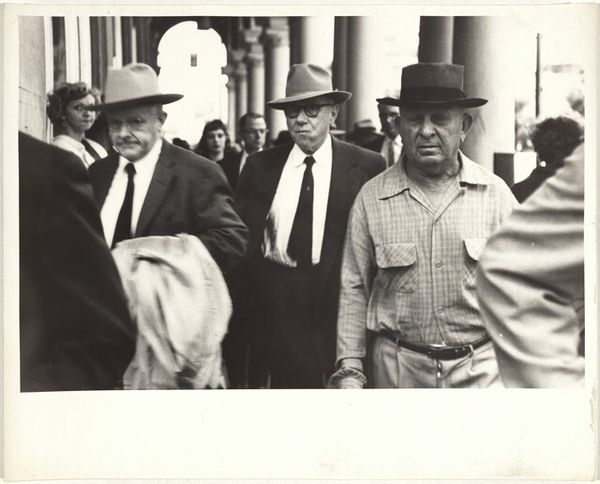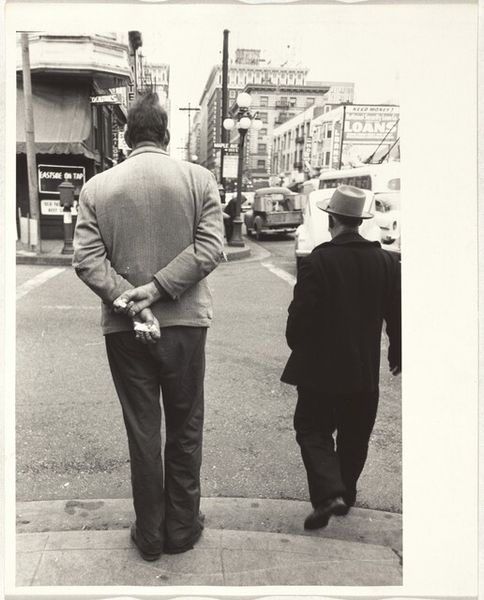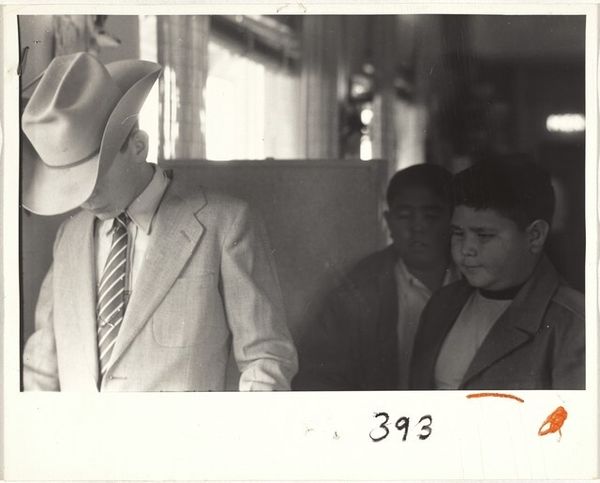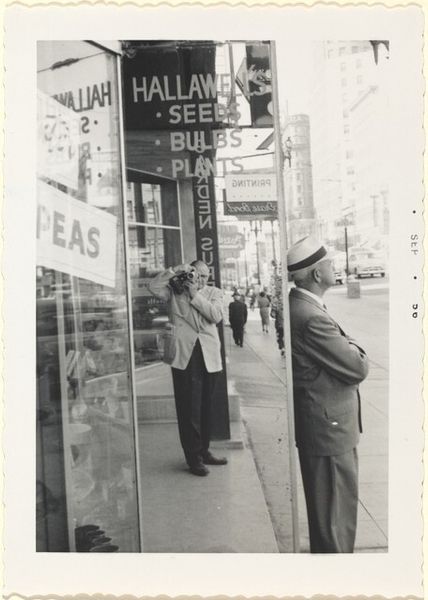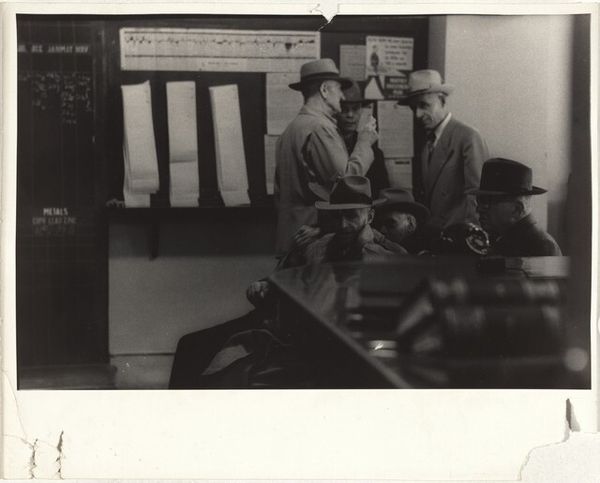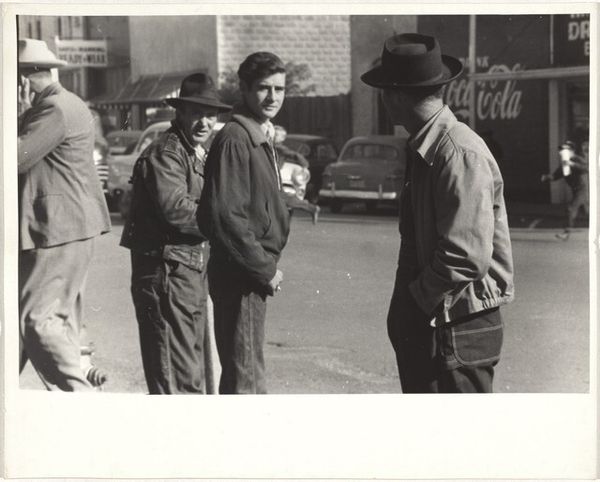
Dimensions: sheet: 20.2 x 25.2 cm (7 15/16 x 9 15/16 in.)
Copyright: National Gallery of Art: CC0 1.0
Curator: Robert Frank’s gelatin silver print, “Two men before store window--Hollywood Boulevard,” taken circa 1955 or 1956, immediately strikes me as quite somber, even claustrophobic, despite the ostensible openness of the street setting. The composition is fascinating. Editor: Somber is definitely a keyword here, yet I’d suggest the artist wanted us to reflect on the sense of isolation and the changing American landscape, particularly as it pertains to masculinity. What strikes me is the window—a kind of partition representing the facade that men had to put up. Curator: I see what you mean about isolation, especially with the somewhat ghostly reflections layered with the subjects themselves. Speaking to the purely formal, I notice how Frank plays with planes of focus to create depth and, dare I say, psychological intrigue. Editor: The choice of Hollywood Boulevard is hardly accidental; it evokes aspirations, dreams, and then starkly juxtaposes these against the lived experiences of ordinary men, perhaps rendered obsolete by the entertainment industry and postwar consumerism. Curator: Looking at the contrast—the starkness of the tones—it pushes certain elements forward while letting others recede, mirroring how memory itself can work. What’s there and what we’re meant to observe are completely different elements. It's like a high-contrast dream. Editor: Precisely! We need to see the way it frames the era's unease concerning socio-economic mobility and repressed desires. Both the location and framing hint towards larger structural tensions. Curator: Yes, by obscuring some of the view through reflections and limiting the visible streetscape. Frank isn’t giving us the full picture but invites contemplation on it. The men also seem weary and worn, standing stiffly in what may have been their best clothes. Editor: These men are literally, and figuratively, "in the window"—the aspirations and contradictions of postwar America laid bare in a single, quietly powerful frame. Their stories are unheard and often untold. Curator: Looking closely now I find my eyes going in many different directions because Frank presents all sorts of compositional challenges and, even if unsettling at first glance, I’m moved by its formal dexterity. Editor: By unveiling everyday complexities and giving the marginalized a place within a canonized history of image making, Frank provides not just art but social critique, demanding that viewers look beyond surfaces.
Comments
No comments
Be the first to comment and join the conversation on the ultimate creative platform.

